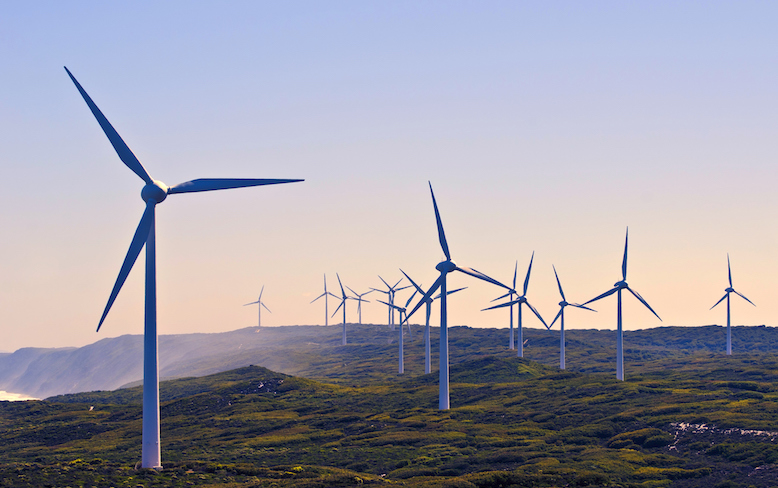
Democratic primary candidates are competing to define the scale and scope of climate action.
Inspired by the activism of 16-year-old Swedish youth Greta Thunberg, the global youth climate strikes of September 2019 were the largest climate-related protests in history. In the United States, protesters called for a “Green New Deal”—a federal program of massive investment in green infrastructure, with the aim of tackling climate change, creating jobs, and promoting economic prosperity for all Americans.
But as public support for government action on climate change grows, politicians are competing to define what a Green New Deal could mean for America.
Today, as the Democratic primary heats up, leading candidates have laid out their own competing ideas of what a Green New Deal could look like.
Current frontrunner and former Vice President Joe Biden’s climate plan promises to go “well beyond the Obama-Biden Administration platform” to achieve net-zero emissions by 2050. It allocates $1.7 trillion in federal funding to the energy transition over 10 years, with an emphasis on research and development for emerging technologies such as energy storage and carbon capture and sequestration.
U.S. Senator Elizabeth Warren (D-Mass.), by contrast, proposes a $3 trillion public investment to reach 100 percent carbon-free energy by 2035. Her plan, which largely tracks the ideas of Washington Governor and former primary candidate Jay Inslee, would maintain existing zero-emission energy resources such as hydro and nuclear while dramatically expanding renewable generation. Warren claims that her plan would be fully paid for by reversing President Trump’s Tax Cuts and Jobs Act of 2017.
U.S. Senator Bernie Sanders’s (I-Vt.) proposal is even more ambitious. At a whopping $16.5 trillion, it dwarfs all other plans in terms of spending and charts a path to 100 percent renewable energy by 2030. Unlike Warren, Sanders has stated that he would not renew licences for already-operating nuclear plants, which currently account for more than half of the zero-emission energy in the United States. He claims the plan will pay for itself over 15 years through steep polluter and corporate taxes, scaled-back military spending, and improved government finances from the creation of millions of well-paying jobs.
For its part, the Trump Administration has not proposed anything resembling a comprehensive climate plan. Environmental groups criticized its recent Affordable Clean Energy rule, which replaced the Obama-era Clean Power Plan, for loosening carbon emission standards and gutting certain permitting procedures under the Clean Air Act.
The Biden, Warren, and Sanders plans each envision a strong role for the federal government in climate policy. But they differ on the specific mechanisms to achieve their climate targets.
The Biden proposal, with its “net-zero” target and emphasis on mitigation technologies such as carbon capture and sequestration, suggests a continued role for fossil fuels in the energy mix of the future. Although it calls for limits on carbon pollution, Biden’s plan is notably light on details, promising only an unspecified “enforcement mechanism” that would “achieve clear, legally-binding emissions reductions with environmental integrity.”
The Warren and Sanders plans, by contrast, would require complete phase-out of fossil fuels. Both plans reference a more robust suite of specific policy tools, including institutional reforms designed to increase the government’s oversight of the energy sector. But whereas Warren largely proposes measures that fit within the existing public-private energy system—for example, encouraging utilities to adopt clean energy through energy portfolio mandates—Sanders envisions a stronger role for direct federal ownership of energy production and distribution.
Under any plan, transitioning away from fossil fuels would force tough choices about the future of traditional energy companies and the workers they employ. All three candidates have promised jobs, investment, and support for communities impacted by the energy transition. But the Green New Deal is also premised on the notion that the benefits of the clean energy revolution should go first to the so-called frontline communities that have historically borne the negative impacts of dirty energy, including tribes, lower-income communities, and communities of color. Although the Biden, Warren, and Sanders plans each purport to honor this principle, how competing claims of entitlement to the economic benefits of federal climate programs would be balanced remains to be seen.
The distributional aspect of the Green New Deal has already generated controversy. Much conservative ire has revolved around the perception that the proposal is a smokescreen for economic and social policies favored by the Democrats. Thomas J. Donahue, CEO of the U.S. Chamber of Commerce, has called the proposal a “Trojan Horse for socialism” that would destroy innovation and put Americans’ personal decisions “in the hands of an unelected elite.”
Recent research sheds light on why some Democrats are so keen to wrap social and economic equity into climate policy. Political scientists have found that distributional concerns, such as jobs and electricity bills, were a major driver of public support for clean energy programs.
If this is true, how candidates communicate the potential social benefits of a Green New Deal to primary voters may turn out to be just as important as the technological or economic feasibility of their climate plans.
